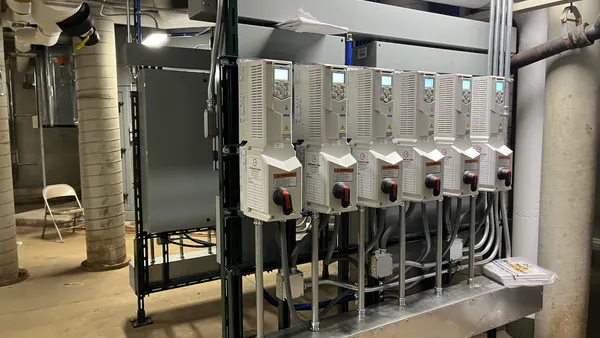Dive Brief:
- The Port Authority of New York and New Jersey has engaged Locus Technologies to expand its air pollutant inventory software and extend its coverage across a significant portion of its operational footprint.
- The organization has been using Locus applications since 2020 to track construction sustainability and waste management. Now, the Port Authority will use Locus’ environmental health and safety platform to track criteria air pollutant and scope 1, 2 and 3 greenhouse gas emissions from “direct fuel usage, indirect energy purchases, trains, aircraft, ships, trucks, construction equipment, building operations” and more, Locus said in a news release April 9.
- “Utilizing Locus’s software will help us manage our emissions data more efficiently and allow us to easily monitor trends so that we can meet our [emissions-reduction] goals,” Christopher Diamond, director of the Office of Sustainability at Port Authority, said in a statement.
Dive Insight:
The Port Authority is targeting a 50% decrease in direct greenhouse gas emissions by 2030 and net zero emissions organizationwide by 2050. That involves zeroing out planet-warming pollutants attributable to six bridges and tunnels; five airports, including LaGuardia Airport and John F. Kennedy International Airport; three bus terminals; the PATH rapid transit system; the World Trade Center and a major seaport.
Such an undertaking requires vast amounts of well-structured, highly granular data, Dorian Bailey, director of alliances and customer success at Locus Technologies, said in an interview. “If you’re making net zero claims, you need to show the data,” Bailey said.
Locus’ software platform can collect and synthesize a wide range of data sources based on users’ direct and indirect operations, Bailey said. These data might include gas and electricity consumption at Port Authority facilities, emissions related to construction and demolition activities, ship and land vehicle movements at the seaport and transit facilities and aircraft movements at regional airports, according to the Port Authority’s website.
Locus’ system allows “standard, built-in emissions data calculations” or customized calculations tailored to individual organizations’ needs, according to its website. That’s important for users gathering detailed data to support more accurate and responsive emissions calculations, Bailey said.
For example, to accurately calculate airplane emissions, the user needs to know each aircraft’s make and model, engine specifications, takeoff weight and landing and taxiing activity, Bailey said.
Locus’ platform can sync with connected hardware such as smart utility meters and pull in “upstream emissions” data from vendors to enable accurate scope 3 tracking, Bailey said. For organizations that need to comply with more than one state, federal or voluntary emissions reporting program, it can generate multiple reports at once using the same data, Locus’ website says.









